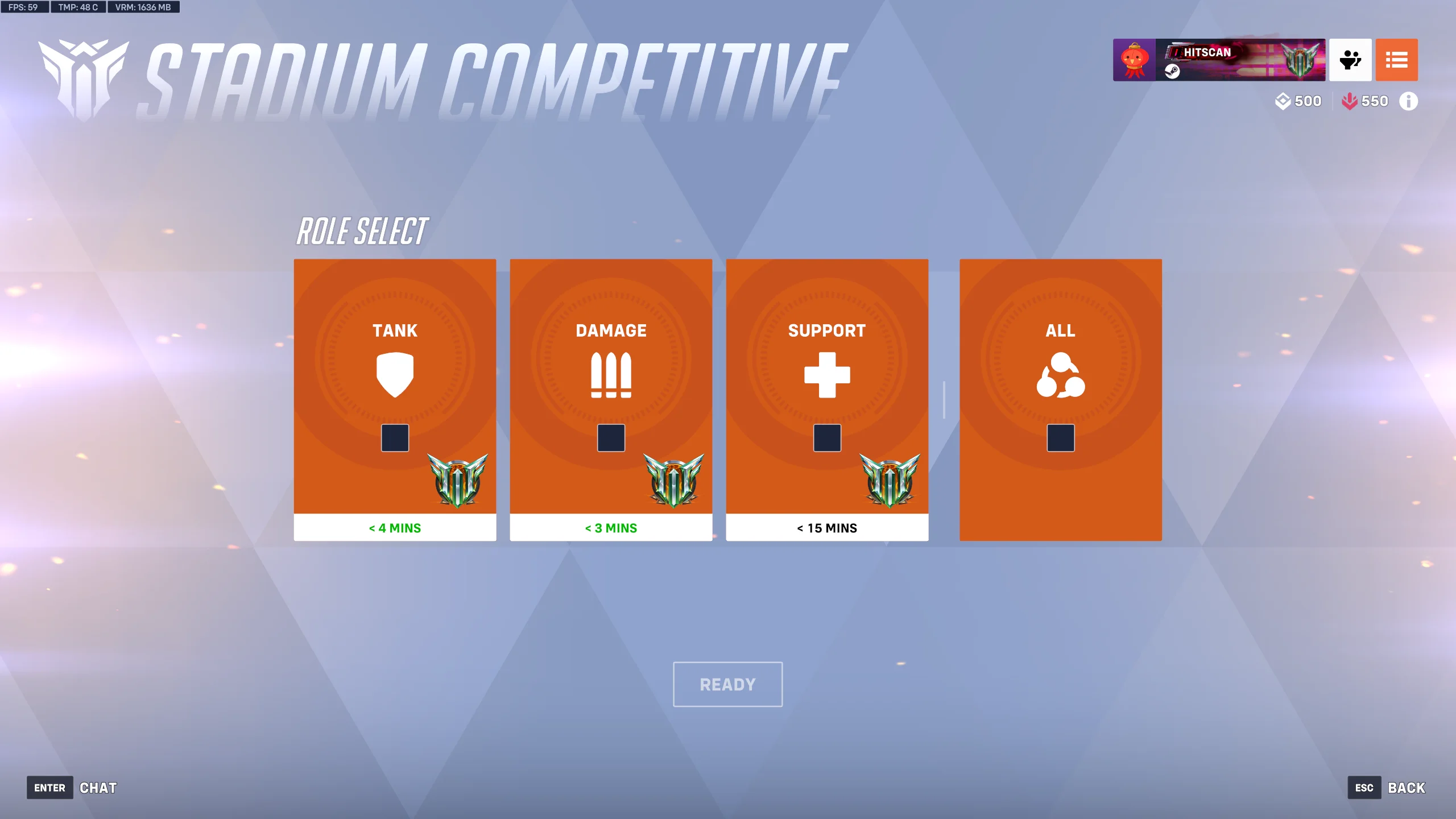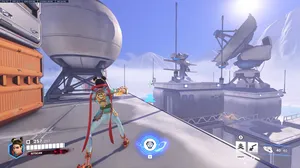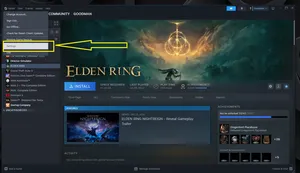
Overview
Random “server connection lost” in Competitive on Samoa: Stadium can cost SR and momentum (as well as a short ban or a season ban). This guide focuses on fast, practical fixes you can apply right now, plus in-match tactics to limit damage if a disconnect happens mid-fight.
What you’ll do:
- Stabilize your connection with low-effort, high-impact tweaks.
- Build a backup plan to rejoin quickly.
- Adjust hero picks and positions on Stadium to reduce risk while you recover.
Build/Loadout
- Network
- Prefer wired Ethernet over Wi‑Fi; avoid powerline if it’s noisy (microwave/fridge circuits can spike packet loss).
- If Wi‑Fi only: use 5 GHz or 6 GHz, not 2.4 GHz; set channel width 20/40 MHz for stability; pick a clean channel.
- Enable UPnP (or port rules) and disable strict firewall rules that block outbound UDP. Avoid double NAT; put ISP gateway in bridge or your router in AP mode.
- Enable Smart Queue/QoS with gaming device priority and upload/download limits just below your line’s real max to tame bufferbloat.
- Keep router firmware updated; reboot the router/modem during off-hours, not during a match.
- System
- Close bandwidth hogs: cloud sync, streaming, downloads, launchers auto-updates, overlays, VPNs.
- Update network adapter drivers/console OS; disable adapter power-saving; prefer high performance power plan.
- Set reliable DNS (e.g., your ISP or any low-latency resolver); clear DNS cache if you see intermittent resolution failures.
- In Overwatch 2: enable the Network Graph (Options > Video/Stats) to watch ping, jitter, and packet loss; cap FPS to avoid CPU/GPU spikes that cause stalls.
- Backup path
- Prepare a mobile hotspot/USB tether as an emergency failover to rejoin within the grace window.
- Keep Battle.net/console auto-login enabled so “Rejoin Match” is one click.
Early Game
- Pre-queue checklist (1 minute)
- Run a quick speed/ping test to your region; verify no packet loss/jitter spikes.
- Close active downloads/streams on your network (household devices included).
- Toggle to Ethernet or 5/6 GHz; ensure QoS is on and your device is prioritized.
- Lobby/first round on Stadium
- Pick stable, forgiving heroes while testing stability: Orisa/Sigma, Lucio/Moira, Soldier: 76/Reaper.
- Position with hard cover near the point entrances rather than exposed sightlines; if you DC, you’re less likely to be instantly deleted.
- Tell your team if your net is flaky so they can save a peel or stall tool.
Mid Game
- If you see yellow/red in the Network Graph or stutters:
- Immediately call “lag/DC, covering” in team chat/VOIP.
- Shift to safer anchors: hug cover on Stadium’s sideline boxes/alcoves; avoid jump pads during instability.
- Swap to sustain/escape picks if needed (Lucio/Kiriko/Sombra/Tracer) to survive desyncs and rejoin fights faster.
- Between rounds, quickly switch to backup connection if the primary is misbehaving (hotspot) and rejoin the lobby instantly.
Late Game
- Overtime and last fight discipline
- Don’t risk long wind-up ults if your graph shows loss/jitter; prefer instant-value ults (Sound Barrier, Coalescence, Tactical Visor) or play for point control.
- Assign stall to a teammate with mobility if your connection is questionable; you anchor near cover to touch safely if needed.
- If you DC, relaunch/rejoin immediately; you have a short grace period to avoid leaver penalties in Competitive.
Combos
- Stability combo: Ethernet + QoS + capped FPS = smooth input and fewer UDP drops.
- Wi‑Fi combo: 5/6 GHz + clean channel + device priority = reduced interference.
- Rejoin combo: Auto-login + hotspot ready + game pinned to taskbar/console quick resume = back in match under a minute.
- In-match combo: Sustain hero + cover positioning + callouts = minimal SR loss during intermittent drops.
Counters
- Versus Wi‑Fi interference
- Move to 5/6 GHz, relocate closer to the router, avoid metal/brick barriers, and disable congested channels.
- Versus bufferbloat (lag when someone uploads/streams)
- Enable Smart Queue/QoS and cap bandwidth slightly below line rate; pause household uploads.
- Versus ISP routing spikes
- Queue off-peak if possible; if spikes start, fail over to hotspot for the remainder of the match.
- Versus background bandwidth drains
- Pause cloud syncs, launcher updates, OS patches, and streaming apps; disable auto-update during play hours.
- Versus driver/firmware bugs
- Update router firmware and NIC/console system; power-cycle equipment outside of matches.
- Versus overheating/CPU spikes
- Cap FPS; close overlays; ensure cooling is adequate; disable unnecessary background services.
- Versus account/region mismatches
- Verify you’re logged into the correct region; avoid VPNs/proxies that reroute traffic unpredictably.
Map/Terrain Tips
- Samoa: Stadium specifics
- Play near solid cover at point entrances and side walls; open mid-field is risky if you DC.
- Avoid jump pads when unstable; a DC mid-boost strands you in the open.
- Tanks anchor on cover between point and spawn-side boxes; supports take line-of-sight corners for fast break if you stutter.
- Rejoin path is short; on reconnect, rotate via safer sideline rather than the central lane to re-enter fights.
- Call for peel if you must touch; let a mobile teammate handle overtime taps while you stabilize.
Common Mistakes
- Rebooting router mid-match (takes too long; you’ll eat penalties). Use backup connection instead and fix later.
- Staying on 2.4 GHz or crowded channels; ignoring QoS, leading to bufferbloat during uploads.
- Using VPN/proxy “for ping” which often increases jitter/packet loss.
- Ignoring the Network Graph; burning ults during visible loss/jitter.
- Playing near edges/exposed lanes on Stadium when unstable; DC = instant pick.
- Leaving match before attempting rejoin; you often have time to return without a leaver penalty.
Quick Checklist
- Wired if possible; otherwise 5/6 GHz on a clean channel.
- Enable QoS/Smart Queue; prioritize your device.
- Close downloads/streams; disable VPNs/overlays.
- Enable Network Graph; cap FPS.
- Prepare hotspot/USB tether for emergency rejoin.
- Pick sustain/escape heroes; hold cover, avoid jump pads.
- Call out issues; rejoin immediately if dropped.
- Fix root cause post-match: firmware, drivers, channel, QoS, wiring.

-1.webp)
-1.webp)

-1.webp)
-1.webp)
-1.webp)
-1.webp)
-1.webp)
-1.webp)
-2.webp)
-2.webp)